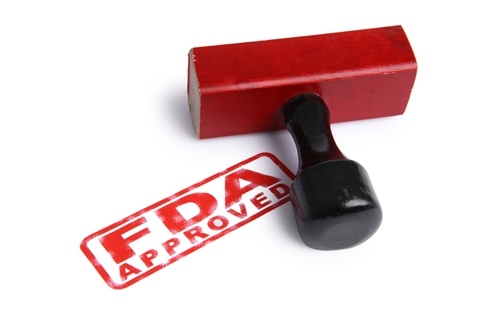
The staged rollout of the Food and Drug Administration's Unique Device Identification (UDI) system is well underway. The seven-year schedule laid out in the agency's original 2013 rule will conclude with deadlines in 2018 and 2020 that apply to devices judged to pose the smallest medical risks.
With Class I and most Class II devices already covered under the UDI rules, many medical device manufacturers and others are already grappling with how best to comply. By centralizing product information and making management and submission easier, Salsify can streamline and simplify a fairly complex process.
How UDI Works and What It Aims to Achieve
The heart of the UDI system is the Global UDI Database, or GUDID, hosted by the FDA's Center for Devices and Radiological Health. An online portal known as "Access GUDID" allows any member of the public to look up or download information about registered medical devices.
The UDI system is a way of tying particular devices to the entries in this database. With each UDI-compliant device bearing both human- and machine-readable identifiers, suppliers, healthcare professionals, and patients gain a quick, reliable way to research medical devices of all kinds.
A single device record in the GUDID database can contain as many as 60 separate fields, including data points such as:
- The manufacturer's name, address, and customer contact details
- Date of last commercial distribution or current status
- The device's FDA listing number, pre-market details, and Global Medical Device Nomenclature code and name
- Manufacturing and expiration dates, storage and handling instructions, or information regarding the presence of latex and other possible hazards
The UDI information printed on particular packages or products therefore serves as a key to search this comprehensive database of FDA-registered medical devices. From basics like gauze bandages to advanced, life-sustaining pacemakers, GUDID contains information about the full range of medical devices and UDI is the means of accessing it.
What a UDI Contains and How They Are Obtained
In particular, each UDI string consists of a shorter Device Identifier (DI) that is actually used to locate a record in GUDID, followed by an optional, composite Production Identifier that can contain basic details like the lot number, serial number, and manufacturing and expiration dates of the individual device. That DI is tied to a specific version of each device and must be updated with the release of a new model or other significant change.
Because every DI needs to be unique in order for the system to work as designed, the FDA has certified three independent agencies to issue new identifiers for each registered medical device:
- GS1, a nonprofit "business communication" standardization group known for helping to develop many common forms of the ubiquitous linear bar code.
- The Health Industry Business Communications Council (HIBCC), an industry-supported "nonprofit standards development organization" that operates worldwide.
- ICCBBA, a nongovernmental group with ties to the World Health Organization.
Each of these sources has its own preferred UDI format and ensures that every one it issues will be unique. A GS 1 UDI label, for example, contains a DI of 14 digits, whereas HIBCC and ICCBBA DI strings can include any combination of alphanumeric characters.
Submitting a Device to GUDID and Keeping Its Details Up to Date
In addition to adding UDI information to products or packages in both human-readable form and at least one machine-ready "Auto ID" format, device manufacturers are also responsible for uploading relevant information to GUDID and keeping it up to date. Once an account has been created and linked to a DUNS number provided by Dun & Bradstreet, GUDID roles can be assigned to specific individuals within an organization.
At that point, the manufacturer, device labeler, or an authorized, registered third party can select between two means of creating and updating GUDID records themselves:
- An interactive, web based interface designed for manual use that allows for the submission or modification of a single GUDID DI record at a time.
- Submission of Health Level 7 Structured Product Labeling XML files through the FDA's Electronic Submissions Gateway, an option designed for use with automated tools and for working with multiple GUDID records at once.
Device labelers can also choose to have a GUDID record designated as a draft, which will leave it unpublished to allow further work. Once a GUDID entry has been published to the public, it will remain available for as long as the database stays online, making it possible for device users to look up information potentially far into the future.
Streamlining a Complex but Important Process with Salsify
As can be seen, there are quite a few details and moving parts to master in order to be sure of complying fully with the FDA's UDI system. As a full-featured product content management platform, Salsify makes it easy to centralize and manage the complete range of UDI-related information and publish it to GUDID and on device labels. Using Salsify as an FDA UDI tracking software solution can make mistakes far less likely and ensure that medical device manufacturers and labelers provide patients, their doctors, and their nurses with all the important information the system allows for.
Written by: Salsify
Salsify helps thousands of brand manufacturers, distributors, and retailers in over 140 countries collaborate to win on the digital shelf.
Recent Posts
How To Kick Shopping Cart Abandonment to the Curb
Gen Alpha Trends: How the Next Generation Influences Buying Behavior and Decisions
Do Brands Need Social Media Influencers In The Age of AI?
Subscribe to the Below the Fold Newsletter
Standing out on the digital shelf starts with access to the latest industry content. Subscribe to Below the Fold, our monthly content newsletter, and join other commerce leaders.

.svg)